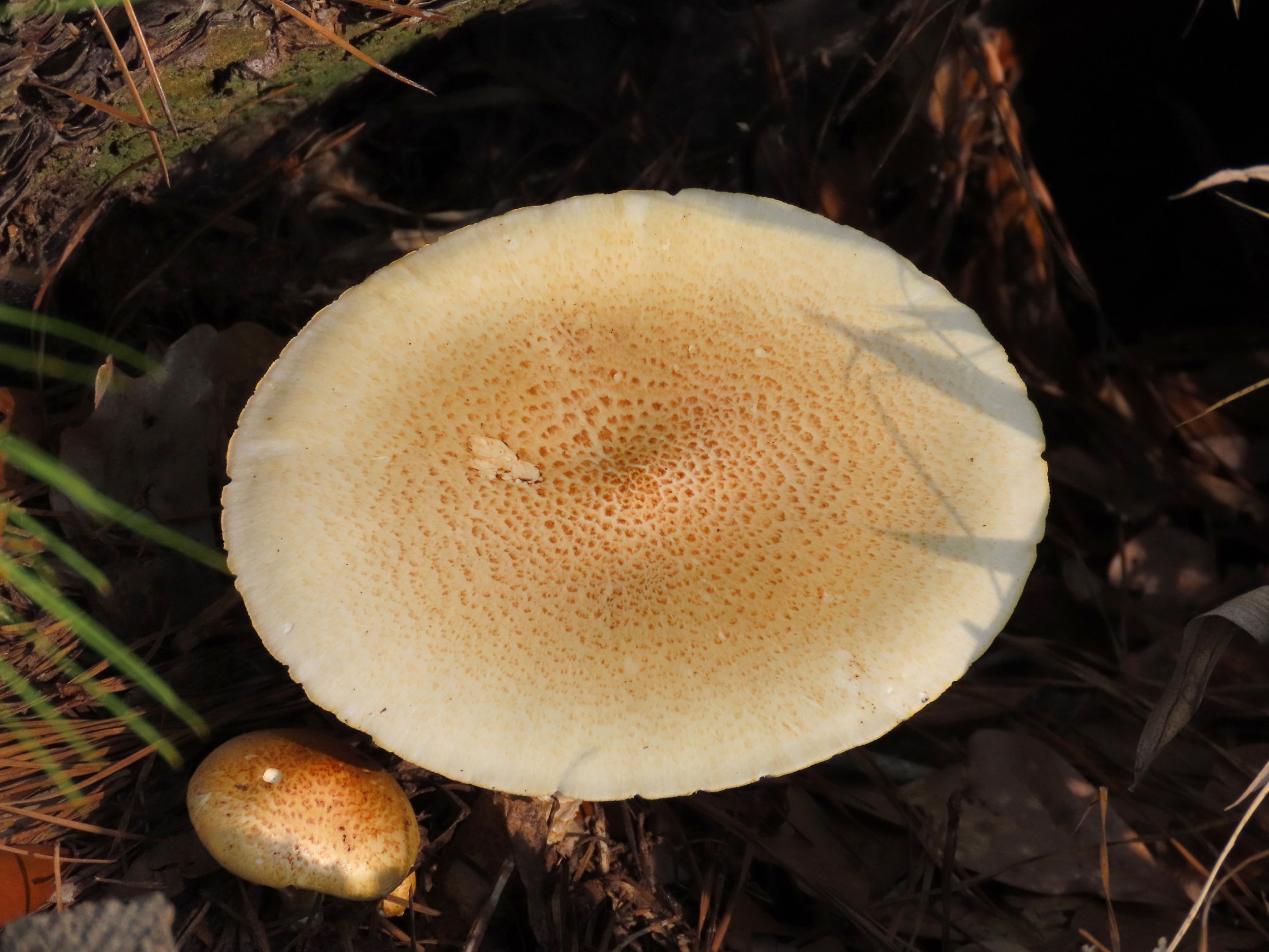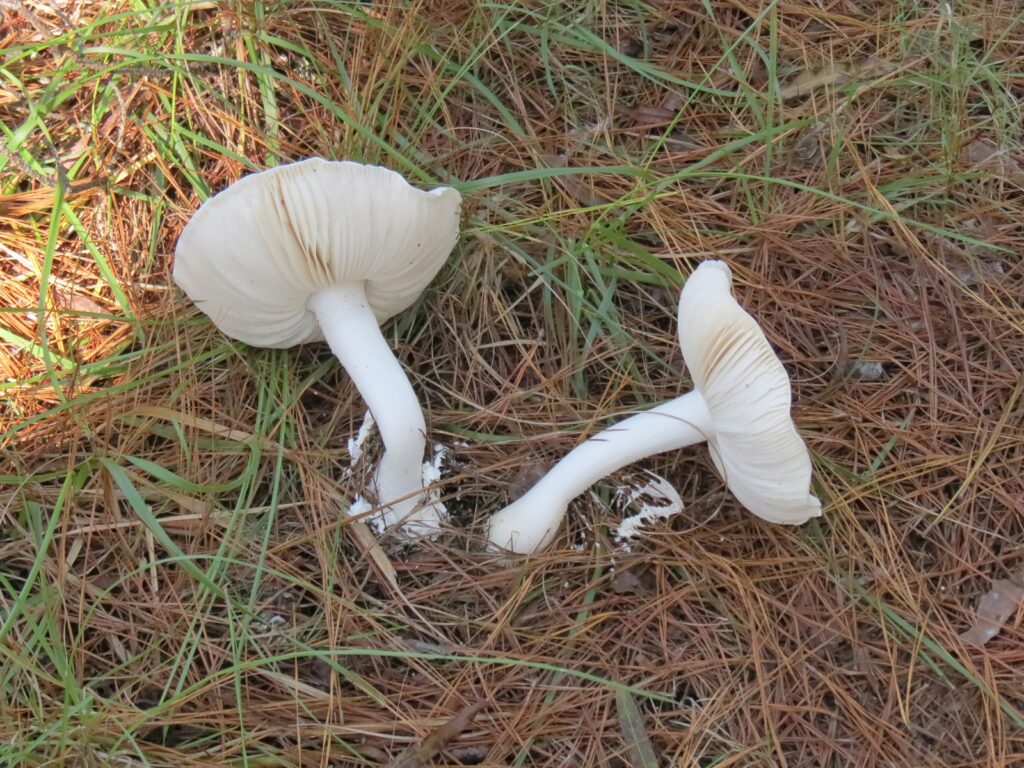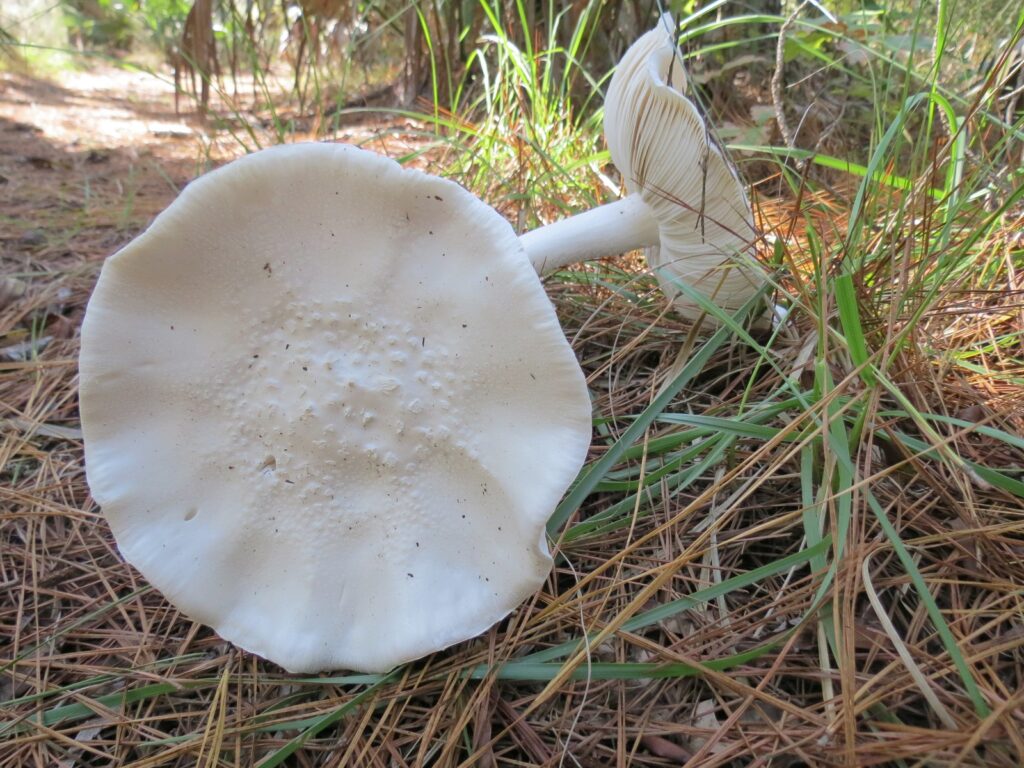


This week for Flora and Fauna Friday we have a genus of common woodland mushrooms with a dark side, the Amanitas.
Amanitas are one of the prototypical fungi we conjure up in our heads when someone says the word “mushroom”. It’s a diverse genus with over a hundred species found in North America. I’m far from a fungus fanatic, so I’m mostly going to stay at a general genus level today. Amanitas’ fruiting bodies, what we lay folk call mushrooms, are agaric in shape. Agaric mushrooms have a prominent and distinctly separate cap with gills held up by a stalk, AKA a toadstool. The size, shape, texture, and color of Amanita mushrooms varies greatly. Many have caps that are white or are a pale-beige but others can be a vibrant red or yellow or conversely a muted brown, gray, or peach. Their texture can be scaly, warty, ribbed, or smooth. Yet in general, the Amanita cap tends to be broad and nearly flat and the stalk is usually lightly-colored, tall, and narrow but not delicate. The stalks also commonly have a skirt under the cap, called an annulus, which is the remains of the membrane that protected the gills during emergence. Amanita mushrooms emerge throughout the year, depending on local habitat conditions and the phenology of different species, but they can most commonly be seen in fall and early winter.
The members of the Amanita genus are all ectomycorrhizal, meaning they join into mutualistic relationships with plants, predominantly trees, by forming a sheath around the plant’s roots underground. The fungus provides the plant with extra nutrients it scoured from the soil and the tree helps feed the fungus in exchange for the salvage work. Due to how common Amanitas are and the significance of mycorrhizal relationships in forest ecology, this genus plays a critical role in keeping our forests healthy. Many species of wildlife also feed on Amanitas and other mushrooms, including squirrels, deer, mice, box turtles, feral hogs, and black bear.
Some species of Amanita are edible for humans as well. However, many Amanita species are far from edible and the genus contains several of the deadliest fungi known to science. The Eastern North American Destroying Angel (Amanita bisporigera) is the most toxic mushroom native to the United States and found in forests throughout South Carolina. Its mushrooms are a smooth, uniform, colorless white. The Death Cap (Amanita phalloides) is native to Europe but has established throughout the United States through the transplanting of tree rootstocks. It is responsible for the majority of all fatal mushroom poisonings globally. The Death Cap mushroom is relatively large in size with a smooth, brass colored cap. Eating either of these two Amanita species causes liver failure. There are other toxic Amanita species as well. Many of the edible species look very similar to the toxic ones, so it is strongly recommended, by practically everyone, that if you have an interest in foraging for edible mushrooms, that all Amanitas be avoided unless you are absolutely, 100% certain of your identification.